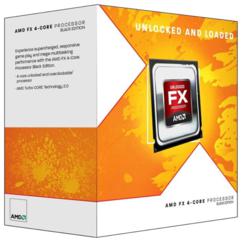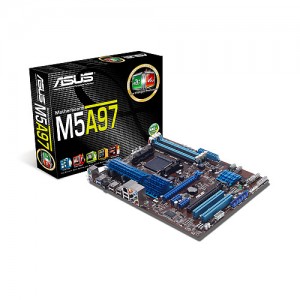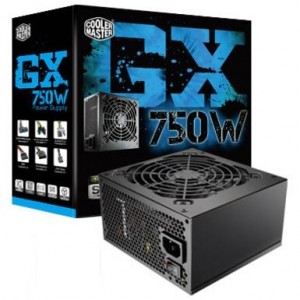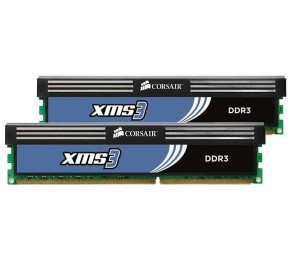| Snažíme se lokalizovat naše webové stránky v co největším počtu jazyků, jak je to možné, ale tato stránka je v současné době stroje přeloženy pomocí Google Translate. | zavřít |
-
-
produkty
-
prostředky
-
podpora
-
společnost
-
Upgrade PC od nuly – Návod – část 1Upgrading a PC from Scratch – Walkthrough – Part 1
Podle Steve Horton Srpen 13, 2012assembling, cpu, graphics card, hard drive, motherboard, upgradeŽádné komentářeUpgradu počítače od začátku
Nedávno jsem měl příležitost upgradovat většinu stolního počítače. Bylo to strašné. Dokonce i základní procházení webových stránek trvalo věčnost, bez ohledu na hry, grafické aplikace nebo vůbec nic.
Moje stávající počítač byl málo starý čtyři roky: AMD Phenom II X2 550 s grafickou kartou Radeon HD 4600.
Takže jsem se rozhodl jít o ořechy a získat novou desku, CPU , napájení, grafickou kartu a novou paměť . Ale chtěl jsem, aby můj rozpočet činil 500 dolarů, ne více.

Proč inovovat?
Možná víte, že tady v ReviverSoftu máme všechno o tom, jak získat maximální užitek z PC, který už máte. A považoval jsem se s mým čtyřletým strojem za pobyt. Ale tady jsem nakonec rozhodl, že nahradím většinu částí.
- Používal jsem svůj počítač pro úkoly, které mu nebyly vhodné
V mém volném čase dělám spoustu úprav grafiky pomocí softwaru, jako jsou GIMP a Inkscape, které vyžadují vážné grafické schopnosti a větší paměť RAM, než jsem měl, a tak se věci zpomalily na procházení, pokud se úplně nerozpadly.
- Zvažoval jsem, ale nakonec odmítl pouze upgrade RAM
Stará paměť DDR2 v mém starém počítači by stála dvakrát tolik jako nová paměť DDR3 RAM v novém počítači a byla by mnohem pomalejší. Ušetřil bych spoustu peněz do paměti tím, že jsem zbytek vylepšil.
- Pravidelně hraji hry
Dokonce i hry, které jsou několik let staré, by na mém počítači nefungovaly dobře, a to ani při nastavení grafiky dolů na hodnotu Nízká. Navíc jsem chtěl vidět, jak má hra vypadat, aby se změnila.
- Ráda dávám dohromady počítače
Mám příbuzné, kteří milují práci na autě. Miluju práci na počítačích a byl jsem nadšen, že to tak bude.
Možná to nejste vy, a možná budete chtít držet se svého počítače spíše než dělat to, co jsem udělal. Ve vašem případě bych vám doporučil začít s devíti kroky pro váš počítač běží jako nový . Pokud máte zájem o opravu, nebo chcete jen uvidět, co jsem udělal, pokračujte v čtení.
Zde je moje volba pro každou komponentu PC a proč jsem si je vybral.
procesor
Obecně si vybíráte procesor předtím, než zvolíte základní desku, protože některé základní desky pracují pouze s určitými CPU a chcete, aby nejlépe vyhovovaly. Původně jsem šel na procesor Phenom II X4 3.6 GHz, pěkný, rychlý čtyřjádrový procesor. Když jsem šel nakupovat na místní Fry’s Electronics, měli pouze Phenom II X4 až 3,0 GHz, což je podstatně pomalejší.
Tak jsem šel s procesorem AMD FX-4100 3,6 GHz, který byl jen o 10 dolarů více než Phenom II 3.0 Ghz. Tam byly stížnosti na technických fórech nedostatku rychlosti v novější FX ve srovnání s Phenom II podobné rychlosti hodin, ale protože to bylo mnohem rychlejší, měl by překonat všechny problémy. CPU činil 110 USD.
Proč AMD a ne Intel? Náklady. AMD jsou výrazně levnější pro stejný výkon. Pokud nejste tak blázen v procesorech Intel, je to nevýrazný.

Základní deska
Původně jsem chtěl Asus F1A75-V Pro základní desku, protože jsem četl dobré recenze, ale můj výběr CPU mě donutil vybrat AM3 + základní desku místo toho (protože F1A75-V Pro není kompatibilní s AM3 +). To zní technicky, ale to prostě znamená, že můj CPU je novější, takže můj základní deska musí podporovat. Tak jsem si vybral Asus M5A97, také dobrou volbu. Moje stará základní deska byla značkou Gigabyte a mám vážné problémy najít na Gigabyte stránkách něco, co je špatně přeloženo a obtížné navigovat. Asus je podle mého názoru jen lepší značkou. Základní deska byla 95 USD.

Grafická karta
Nyní můžete dostat to, co se nazývá APU, což jsou CPU + GPU na jednom čipu. Co to znamená, že získáte počítač a grafiku v jednom za velmi levnou cenu. Ale chtěl jsem trochu víc grafické síly než APU, takže jsem hledala levnou grafickou kartu střední třídy. Můj spolupracovník doporučil značku Nvidia pro grafické karty, na které jsem zvykl, což byla značka AMD. Nvidia GTX 550 Ti 1 GB funguje velmi dobře pro všechny, ale pro nejtěžší hráče, což rozhodně nejsem. Pěkná věc je, že nemusím dostávat dvě karty a nemusím si dělat něco super, abych spustil všechno, co potřebuji velmi dobře. Grafická karta byla 130 dolarů.

Zdroj napájení
Typ napájení, který dostanete, je skutečně závislý na vaší grafické kartě. Podívejte se na zadní straně grafické karty pro doporučení. V tomto případě grafická karta Nvidia prohlásila, že potřebuje napájecí zdroj s minimálním napětím 400 wattů s hodnotou “12 V proudového proudu 24 Amp”, ať už to znamená cokoliv. Takže jsem šel dolů řadou napájecích zdrojů a nejlepší zdroj napájení, který skutečně nabízel tento rating na zadní straně jeho boxu byl 750w. Vyšší výkon je lepší, protože riskujete, že byste jinak vypálili napájení. Nejdůležitější je však věnovat pozornost aktuálnímu hodnocení. Tento PSU byl 75 dolarů po slevě 25 dolarů.

Paměť
Zjistěte maximální rychlost paměti, kterou podporuje základní deska, a typ paměti a získejte osm gigabajtů. V mém případě jsem šel na 8 GB paměti DDR3 1600Mhz. Je to také značka Corsair a značka je pro paměť stejně důležitá jako každá jiná součást. Paměť je v dnešní době špinavá. Paměť byla 60 dolarů po slevě 10 dolarů.

Pouzdra a disky
Obvykle budete potřebovat dobrý prostor k uložení všech těchto věcí, stejně jako disk DVD nebo Blu-Ray a pevný disk. To jsou věci, které jsem přenesl ze svého starého počítače. Kromě diskové jednotky. Ukazuje se, že novější základní desky nemají starý standard IDE pro diskové jednotky, takže můj disk není podporován. Všechno je nyní na Serial ATA nebo SATA. Chystám se uložit a dostat Blu-Ray disk příště, že může vypálit Blu-Ray disky, kdybych někdy musel udělat.
Při nakupování skříně se podívejte na středovou věž, která podporuje základní desky ATX v plné velikosti. Nechoďte na opravdu drobné nebo opravdu obrovské nebo divné kazety, protože se dostanete do problémů. Ti, kteří mají na sobě fanoušky navíc, jsou v pohodě, doslova.
A při nakupování na pevný disk jsou rychlejší RPM lepší, ačkoli stojí za trochu víc a jdou na 1 terabyte (TB) nebo vyšší. Využijete prostor mnohem rychleji, než jste očekávali. Budete trávit asi 100 až 150 dolarů na pevný disk.
Nakonec zvážte menší jednotku SSD, která bude doprovázet váš větší pevný disk, a vložte systém Windows na pevný disk. Diskutovali jsme o SSD v minulosti a poskytují bleskové časy bootování a všeobecné časy přístupu, které stojí za přijetí. Určitě jsem dostal SSD na můj radar.Celkové náklady
Po slevách jsem strávil 470 dolarů na mém upgradu, což je v porovnání s nákupem sestaveného PC crazy levnější. Je úžasné, kolik levnější elektroniky se dostalo. První počítač, který jsem kdy vlastnil, byl v roce 1995 Pentium-75, který stálo 2 000 dolarů.
V části 2 tohoto článku projdu svou práci, kterou jsem sestavil z počítače počítače Frankenstein, a to, co mi chybělo, proto se nezapne na první hodinu, dokud neodstraním problém. Podívejte se na to brzy!
Was this post helpful?YesNoVolný, uvolnit Aktualizace ovladačů
Aktualizujte své ovladače za méně než 2 minuty, abyste si mohli užívat lépe výkon PC - Volný, uvolnit.
Volný, uvolnit Aktualizace ovladačů
Aktualizujte své ovladače za méně než 2 minuty, abyste si mohli užívat lépe
výkon PC - Volný, uvolnit.
Nenašli jste odpověď?Zeptejte se na naší komunity odborníků z celého světa a obdržet odpověď v žádném okamžiku vůbec.most relevant poslední články Připněte si to na Pinterest